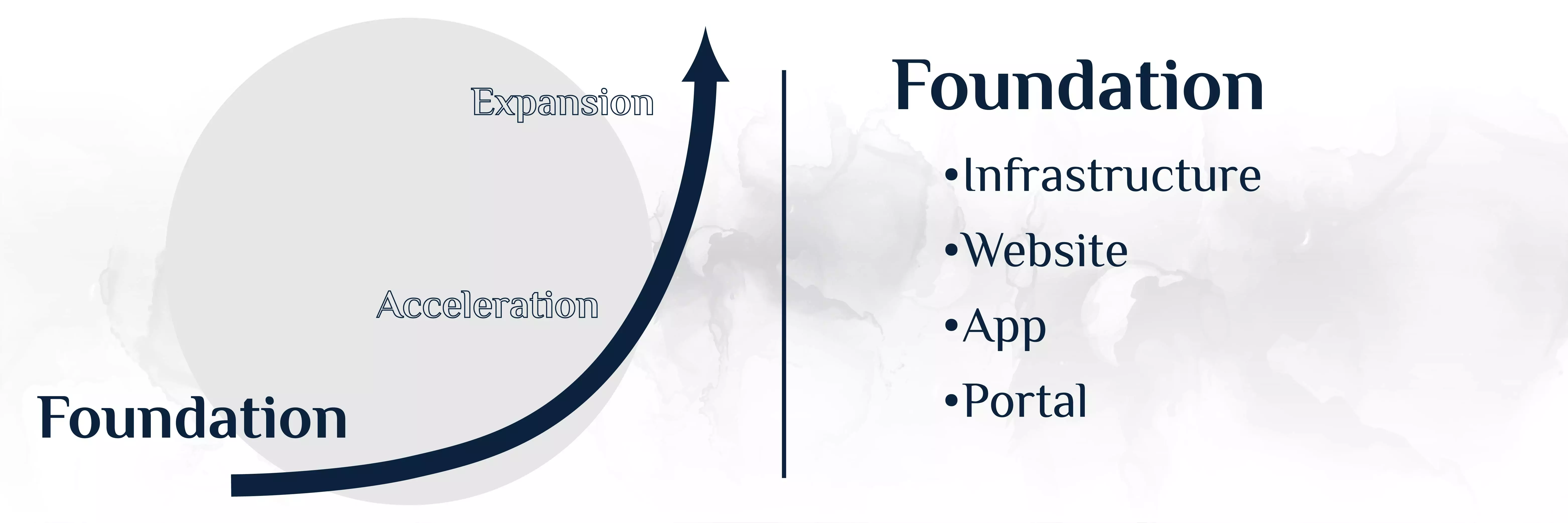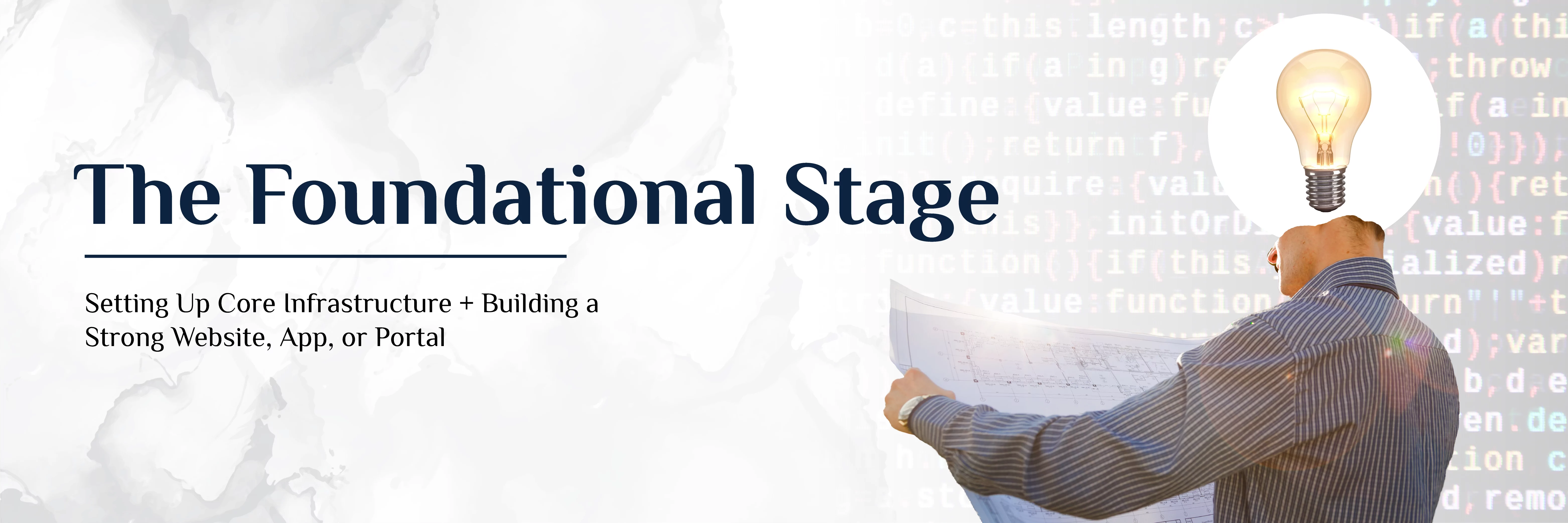Insights
In today’s ever-evolving digital landscape, there is always “more.” More to do, more tactics to focus on, and more to accomplish in the day. In such a busy world, it can be challenging to know where best to allocate resources to be as efficient and effective as possible. Balancing resources and outcomes can be challenging, but not impossible. By understanding and mastering digital marketing maturity, organizations can equip themselves to better make those resourcing decisions and achieve their desired results.
The Digital Marketing Maturity Model

An organization’s digital maturity refers to its ability to effectively leverage digital channels, tools, and strategies to meet business objectives and provide value. Understanding digital marketing maturity and effectively leveraging it can allow organizations to maximize the return on investment (ROI) of their efforts, taking them from digital marketing for beginners to digital marketing for experts.
For many organizations, the primary challenge in achieving digital maturity is resource allocation. Without a clear roadmap, it can be easy to spend more time or budget in one area while neglecting another, leading to suboptimal results and wasted resources.
At Br8kthru, we have created a Digital Marketing Maturity Model to help guide organizations through the process of becoming aware of and responding to their digital maturity. Each of the three stages — Foundation, Acceleration, Expansion — represents a series of strategies and tactics that can be used to advance an organization’s digital maturity while aligning with business goals for a better ROI. In this article, we will focus on the activities that represent digital marketing for beginners, or the foundational stage. These activities can be used to help establish a digital marketing presence in your industry and will act as the groundwork for future activities.

The Foundational Stage of Digital Marketing Maturity
The Foundation stage of digital marketing maturity, occasionally referred to as “digital marketing for beginners,” acts as groundwork for future activities. These activities are used to help organizations establish a digital marketing presence in their industry. They will be the foundation for future activities, such as those in the Acceleration and Expansion phases. Think of it as the frame of your digital marketing strategy — without these tactics, your entire structure is unstable.
While there are many foundational activities an organization may tackle, we will focus on two primarily: establishing core marketing infrastructure and creating a strong website.
Set Up Core Infrastructure
One of the first stages of digital marketing for beginners is to set up your core infrastructure. While this will look different across industries and for different businesses, some components are universal.
First, a customer relationship management (CRM) tool will help you manage and analyze your interactions with prospects and Clients, making your sales and marketing efforts more effective and efficient.
There are many options for CRM software, and choosing the right one is essential. Make sure the software you choose has the capabilities you need currently and can grow with your business as it grows and your digital maturity advances. In addition, it should be able to integrate seamlessly with your other marketing tools so you can better understand your Clients and audiences, leading to better strategies and outcomes.
By implementing a CRM and other pieces of marketing infrastructure, you will be creating a database of information that can be used throughout your organization, especially in sales and marketing, to improve the Client experience and gain a competitive advantage.
Build a Strong Website, App, or Portal

Your online tools, like your website, app, or portal, act as your digital home base. Often, these spaces are where prospects have early interactions with your brand, and they can be used as powerful decision-making tools. As a result, not only should you have a website, app, or portal, but you should also ensure it is user-friendly, informative, and visually appealing.
While this may feel like digital marketing for beginners, these tools lay the foundation for future interactions with Clients and prospects, so you and your team should be prepared to spend a decent amount of time on them.
First, be aware of your user experience (UX). An intuitive and frictionless user experience will keep users on the site for longer, and encourage them to dive deeper into your content. Focusing on the UX can cover many aspects of a website, app, or portal, such as the branding, design, usability, and functionality of various components. Look at marketing website examples that you like to help you and your team gain a better understanding of the UX you’d like to see on your site or app.
Next, consider your content strategy. Quality content on the many pages of your website or app will inform your audience about your products and services, and persuade them to work with you over a competitor. Similarly, you will want to have a search engine optimization (SEO) strategy for on-page and technical SEO. Again, use examples — or even competitor sites — to understand the types of content you’d like to put on each page.
Together, these activities will form the baseline of your website, which can be used to attract and retain Clients and users. By allocating your resources toward your website, at least at the foundation stage, you and your organization will be setting yourselves up for success in the future, especially as you continue to grow and become more mature.
Beyond the Foundational: Next Steps in Digital Marketing Maturity
Once you have established these foundational aspects of your digital marketing efforts, you may begin thinking about how best to optimize them. For example, consider analyzing the user journey throughout your website or application, or create workflows to ensure a high-quality first digital touchpoint for audience members. Also, establish centralized processes and documentation for the continued management and maintenance of your infrastructure and website, so you can be sure the hard work done so far carries through as your organization continues to grow and evolve.
At this point, you are prepared to move forward into the Acceleration phase, which goes beyond the Foundations and into activities that can begin to build your brand awareness and convert users.
When utilized effectively, the Digital Marketing Maturity Model can provide you and your organization with a roadmap of activities and tactics to advance your digital marketing activities.
Going Above and Beyond with a Digital Marketing Gap Audit
If you and your team are looking to go from digital marketing for beginners to digital marketing for experts, Br8kthru can help. Our complimentary Digital Marketing Gap Audit provides you with an analysis and assessment of your digital marketing activities from the perspective of our subject matter experts (SMEs). We’ll analyze your existing activities, highlight your strengths, and make recommendations for improvements so you can continue to advance your digital marketing maturity. Receive more information and request your Digital Marketing Gap Audit today.